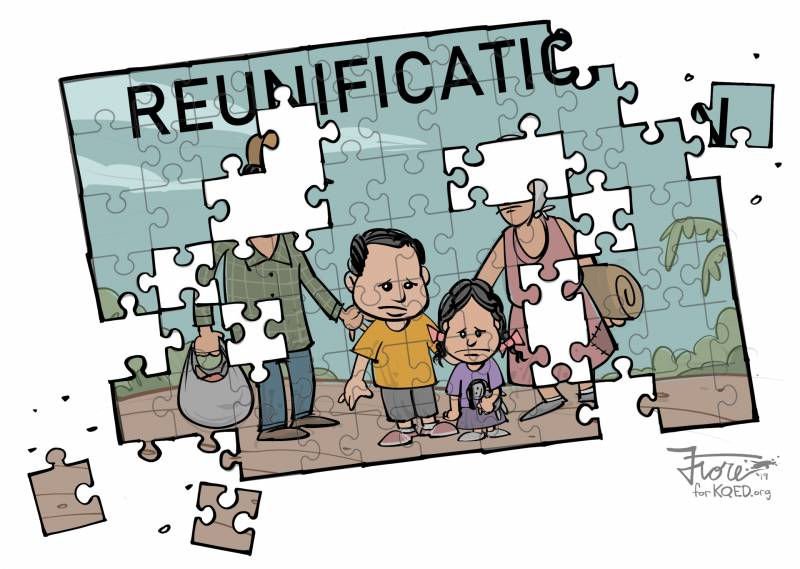Brazil and Europe’s control of refugee’s family migration
States recognize the right to family and family life of all human beings. However, at the same time, they use different tactics to limit family reunification. So on the one hand, all human beings have a recognized right to family; on the other, all States are sovereign to control their borders. With the use of xenophobic and “burden” discourses, politicians in different parts of the world adopt three strategies to make it harder for immigrant and refugee families to be reunited in destination countries: limited definitions of family; bureaucratic obstacles in the procedures and fear of the misuse in the right of family reunification.
This paradox of “reunification of family as a human right” vs. “strategies to limit family reunification” is seen not only in developed countries in Europe but also in developing countries like Brazil. Since 2003, the European Union recognizes that immigrants, including refugees, have the right to reunite with their families. Brazil also recognized the right to family reunification for all immigrants (including refugees) in its Migration Law in 2017. Nonetheless, States have the sovereign prerogative to decide who enters their territory (Lambert, 2014).
Refugees present a particular challenge to these laws since they are forcibly displaced people due to a well-founded fear of persecution because of race, nationality, religion, political opinion, or membership of a particular social group. By definition, governments cannot send refugees back to places where their lives and well-being could be harmed. Hence, they cannot live with their families unless they bring their relatives to their asylum-countries (Carens, 2003). Since States cannot explicitly deny refugees their right to family, but they want to control who enters their territory, States employ three main strategies to restrict this right: the definition of family, procedural and bureaucratic obstacles, and discussions on the misuse of the right to family life. This blog post briefly discusses each one of those.

The first strategy is adopting a limited definition of family based on the idea of a nuclear family (married parents and minor/single children). While some countries may accept other relatives in extraordinary circumstances and there is a growing movement to recognize same-sex couples, the possibility of bringing relatives that are important for the well-being of the family (like brothers, grandparents, and cousins) is minimal. Most states do not accept polygamous families. The main problem is that most refugees come from sociocultural contexts with expanded definitions of families.
Even countries with an extended definition of family, like Brazil, adopt legislation to limit family migration. This may be connected to the recent governments more averse to the topic of human rights and immigration in general that try to limit family migration in the country. Brazil used to accept family members economically dependent on the refugee. Recently, a new normative has limited this to the second generation, brothers and sisters. Besides that, refugees’ relatives that came by family reunification procedures cannot apply for family reunification anymore.
A second strategy to limit family reunification is to make the procedure harder with administrative exigencies. Many countries demand DNA tests to prove family ties, pre-departure integration exams, and other proofs that the family will integrate and minimum requirements regarding accommodation and salaries (Bonjour, 2014). Although countries grant refugees exceptions from these exigencies, most refugees are not able to reunite with their family members in these “windows.” Some states adopt a maximum deadline for refugees to apply for family reunification. Brazil does not use DNA tests, integration requirements, or deadlines for family reunification. However, the country has adopted some bureaucratic obstacles that include harder checks to prove economic dependency, the use of an online system that is not user-friendly, and harder interviews with the families in Brazilian consular authorities abroad. Besides that, the Brazilian family reunification procedure has no possibility of appeals or revisions.
Finally, States say that immigrants misuse their right to family reunification with the use of convenience marriage and false parenting declarations. However, there are no conclusive studies that refugees engage more in this practice than nationals (EMN, 2012). In Brazil, changes in the family reunification procedure to make it harder were justified by the misuse of the family reunification procedure by refugee families. Brazilian authorities say that there was an increase in the use of fake documents to prove false family ties. Again, there are no supporting statistics for this claim.
Family migration, including family reunification, is one of the most significant documented influxes of people crossing borders not only in developed countries but also in developing ones. More recently, the immigrant family became the last frontier to constrict migration. This blog post briefly stated how three strategies are employed in Europe and Brazil to prevent the family reunification of refugees at the same time that those States explicitly recognize the right to family reunification.
References
Bonjour, S. (2014). The transfer of pre-departure integration requirements for family migrants among member states of the European Union. Comparative Migration Studies, 2(2), 203-226.
Carens, J. H. (2003). Who should get in? The ethics of immigration admissions. Ethics & International Affairs, 17(1), 95-110.
European Migration Network. (2012). Misuse of the Right to Family Reunification. Brussels: EMN, June 2012. Retrieved from https://ec.europa.eu/home-affairs/sites/homeaffairs/files/what-we-do/networks/european_migration_network/reports/docs/emn-studies/family-reunification/0a_emn_misuse_family_reunification_study_final_june_2012_en.pdf.
Lambert, H. (2014). Family unity in migration law: the evolution of a more unified approach in Europe. In Chetail, V.; Bauloz, C., (ed.). Research handbook on international law and migration. Cheltenham: Edward Elgar,194-215.

Patricia Nabuco Martuscelli has recently finished her Ph.D. in Political Science at the Universidade de São Paulo (USP, Brazil). Her dissertation was on the family reunification policy for refugees in Brazil. Patrícia was a Visiting Scholar at the Carolina Population Center (UNC, 2017-2018) and a ZUKOnnect Fellow at the Zukunftskolleg (University of Konstanz, 2019). She works on family reunification, asylum and migration policies, and child migration with a focus in Latin America. More information available at https://sites.google.com/view/patricia-martuscelli
